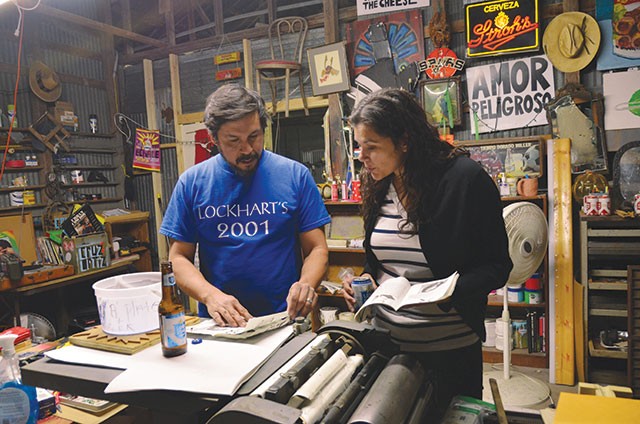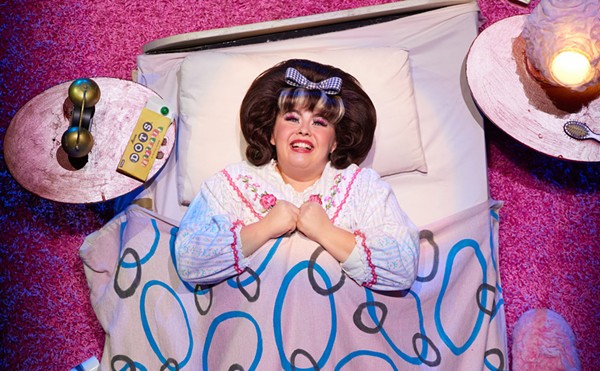First of all, Leslie Moody Castro isn’t much of an “outsider,” she’s maintained strong ties to the city since her 2010 internship at Artpace. But, Moody Castro has gone on to a successful career as an independent curator based in Austin and Mexico City. Most recently, she helped organize Mexico City’s inaugural Material Art Fair, an international contemporary and alternative art fair.
Moody Castro approached the Current about a series of articles detailing the ins and outs of the curatorial process, something that rarely gets discussed in our local visual arts coverage. This is her introductory column, and the series will conclude following the debut of Moody Castro’s CAM Perennial show here on March 21.
For the month of March, San Antonio turns its focus to contemporary art. It’s a remarkable thing. Going on 28 years, Contemporary Art Month (CAM) has set a precedent in city-wide art loving via publicizing, promoting and celebrating the local arts community. Three years ago, CAM debuted its own annual exhibition, the CAM Perennial, hosted by the Guadalupe Cultural Arts Center and produced by a guest curator voted on by members of the CAM board. In 2013 CAM started a new program called the CAMx, or the CAM Exchange, where curators and artists partner with a different city every year to create a cross-pollination of artists, exhibitions, curators and public.
This very recent history is important. About three months ago I received a phone call from Nina Hassele, one of the two co-directors of CAM to tell me I had been selected to curate the CAM Perennial in 2014.
I was sitting on the floor of my bedroom in Mexico City, the sister city for CAM 2014, and was chatting with Nina about the project, the logistics, and generally just trying to wrap my mind around the whole thing. It was an incredibly welcome surprise, and naturally I was overwhelmed by the task. I am an independent curator, and have been working professionally for 10 years on collaborative projects, side by side with international artists, in the most random repertoire of spaces. During that phone call, I went from excitement to the dread that I always nose-dive into as the logistics suddenly become very real.
My foray into curating is somewhat unconventional. I hesitate to say that there is any single style of curating, or any real path that one follows to become a curator. However, mine was purely accidental. I started art history in high school, couldn’t shake it in college and one day I realized I liked art. I like the challenges that come with working in such an important niche, which historically exposes and draws from culture shifts.
I earned my master’s degree from the University of Texas—Austin in museum education with a supplementary program in museum studies. I was convinced that there was more to curating than just the artist and the curator. Matter of fact, I am still convinced of this. There is always a huge public that either goes, or doesn’t go, to whatever exhibition that curator/artist combination has made. So, I went to school to try to understand the visitor and how to design an exhibition with everything in mind: the curator (me), the artist(s), the exhibition space itself and the public.
What I learned is that I am not just a curator, but rather an arbitrator walking the line and navigating all the theoretical conversations that pop up when dealing with so many unexpected factors. What I do is build relationships, help to guide artists and, more than anything, sit back and watch.
Approaching any new project in a new space with unknown artists is always nerve wracking for me for multiple reasons—mainly because I never truly see myself as someone deserving enough to tell the public what they should see, how they should see it and what to think about it. My field can be incredibly narcissistic. Maintaining a balance between pushing the public to see things in a different way and keeping my own eyes open enough to learn from the public and the space is such an ambitious challenge that it really can become exhausting. Secondly, starting any project becomes intimidating because I have a deep respect for artists in their studio, and visiting them in their workspace is such an intimate invitation to view work in progress. It’s something for which I never feel totally qualified for—nor will I ever.
All in all, I sat on the floor of my bedroom in Mexico City, on the phone with the co-director of CAM and thought: What the hell am I doing?
I really have no idea what I am doing, and that’s OK ... That’s how it should be, actually. In order to let the trifecta of space/public/artist dictate how this show will happen, I can’t have any preconceived notions. Over the course of the next six weeks I will take you all on this crazy journey with me as I try to figure it out. Once a week I will write this column as I visit artists’ studios, spend time in the archives of the Guadalupe Cultural Arts Center and generally just try to make sense of what this exhibition can be. My goal is to make this effort transparent and to provide insight into the final product while I work to get a grasp on the space, the community, the public and the artists. At the end of the day, it’s a process.
Now the first question is: Where to start?

















